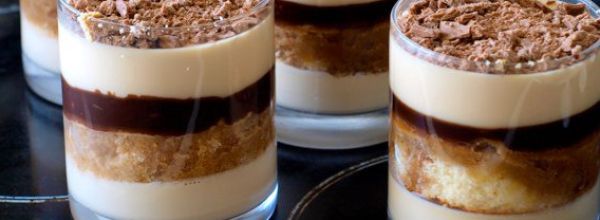Anyone who has worked in a molecular biology lab knows that DNA gel extraction can be surprisingly challenging. Why is this? Is it because of poor product yields, or maybe it’s because the gel extraction process uses harsh chemicals and conditions (e.g., chaotropic salts, ethidium bromide, ethanol, heat) that will damage or denature DNA and potentially decrease cloning success.
In this article, we share some tips to help you maximize your yields of high-quality DNA from the gel extraction process.
Top 10 DNA Gel Extraction Tips
1. Trim the Gel Slice as Much as Possible
Get rid of all excess gel, including the gel in front of or behind your DNA band. Most people cut out a square around the gel but don’t think to stand the excised piece up and trim the gel away from the front and back. If you pour a thick gel, there will be a lot more gel to remove. The more you can remove from your DNA band, the higher your yield will be.
2. Minimize Exposure to UV Light
The UV light causes DNA damage that can impact the clonability of the DNA. Cut your gel slice quickly. If you have multiple bands to trim, work with one band at a time under UV. Don’t leave your entire gel sitting under the UV light while you cut one slice at a time. Otherwise, you risk that the DNA exposed to UV for the longest time will be nicked to shreds. Alternatively, use a visible range stain such as methylene blue or crystal violet. You can read more about this step in our article on preparing vectors for cloning.
3. Remove All Traces of Phenol Using A “Home Brew” Method
If you are using phenol to purify the DNA from agarose, bear in mind that phenol traces will not be removed by ethanol precipitation and will inhibit subsequent ligation reactions. You can evaporate traces of phenol from the aqueous phase by warming the supernatant to 65°C for 5 minutes. Then, let it cool back down to room temperature over 10-20 minutes before precipitating to ensure that you obtain double-stranded DNA (remember that double-stranded DNA separates a high temperatures).
4. Change to a New Brand or Bottle of Agarose
Sometimes, agarose actually causes enzyme inhibition during downstream reactions (e.g. ligation, PCR). It may be that the agarose is old and the quality is no longer good or it may brand-dependent. We can’t provide a concrete reason for this observation, but bear in mind that simply switching to a different bottle of agarose may increase your chances of cloning success.
5. Run Controls
To determine if your problem is actually related to the gel extraction process, try running a control in which you digest empty vector with a single enzyme, perform the gel extraction, and re-ligate it. A vector cut with one enzyme should re-ligate very easily and provide plenty of bacterial colonies on a transformation plate. If the control ligation works, then the inability to clone your DNA construct may be related to some other factor, such as secondary structure of the DNA, repeat sequences causing instability in E.coli, or the DNA may encode a protein that is toxic in bacteria.
The Following Tips Apply If You Are Using Commercial Silica Spin Kits
6. Renature the DNA
The melting step combines high concentrations of chaotropic salts with heat. This combination will denature the DNA. If the eluted DNA appears at half the expected size (it is now single-stranded), renature the DNA by warming it up to 95°C for 1 minute and let it slowly cool down to room temperature.
7. Wash It Again
An extra washing step with the ethanol-containing wash buffer in the kit will always help get rid of chaotropic salt residues on the membrane. Washing is a critical step in the gel extraction process since carryover of chaotropic salts will inhibit DNA ligase.
8. Make Sure All of the Ethanol Is Gone
The silica membrane must be dry after the ethanol wash steps to ensure a good yield and successful cloning. To determine if you have ethanol in the final DNA, run a test agarose gel on the eluted sample. If the sample floats out of the well (even in the presence of loading dye), you have ethanol contamination. To enhance the drying step (especially if you live in areas where humidity is high), try centrifuging the spin column with the cap open to maximize airflow through the membrane.
9. Only Use High-Quality Ethanol
It is critical to use high-quality ethanol in the wash buffer and not denatured alcohol. Denatured alcohol contains chemicals such as isopropanol, methanol and benzene, and these chemicals will not dry from the silica membrane, thus making their way into your DNA solution. You know you’ve used denatured alcohol if you ever notice that a) your DNA smells funny, b) your DNA won’t freeze at –20°C, c) you observe the floating phenomenon mentioned above.
10. Elute Your DNA With Hot Elution Buffer
Heating the elution buffer to 70°C before applying your sample to the column will release more of the DNA from the membrane, resulting in higher yields. Allowing the buffer to sit on the column for 5 minutes before centrifugation can also help to increase yield.
DNA Gel Extraction Tips Summarized
Extraction of DNA from a gel is an essential step in most cloning and sequencing projects. It doesn’t have to be the bottleneck for getting to the real work of expressing the protein or genotyping your DNA. With these simple tips, gel extraction will be a walk in the park, sending you on your way to ligation success in no time!
Want an alternative to kits for your DNA gel extraction? Discover old-school DNA gel extraction methods that can save you money and reduce waste.
Do you have any extra DNA gel extraction tips? Leave a comment below.
Originally published on November 12, 2007. Updated and revised in May 2017.



